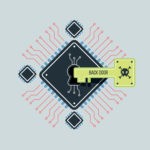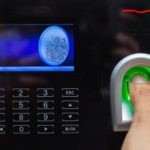"Backdoor" in computer security is synonymous with a "maintenance hook" - a second, hidden way into the software/system that may allow malicious entities to bypass security.
Behavioral authentication is based on a person's movement characteristics. Other types of authentication include something you know (passwords), something you have (security token), something you are (fingerprint biometrics). Behavioral authentication includes something you do. Examples include gaze-based authentication, signature-based authentication, and movement-based authentication.
A form of identification and access control based on a person's physical attribute. The most common physiological characteristic used for identification is the fingerprint. Biometric authentication falls under the authentication type of something you are. Types of biometric authentication include facial biometrics, vein scans, and fingerprint biometrics.
The Biometric Information Privacy Act (BIPA) requirements apply to any private entity collecting, storing, or transmitting biometric information and doing business in the state of Illinois to comply with requirements on the collection and storage of biometric information.
A type of malicious hacker whose intent is to thwart security barriers to criminally access computer networks and steal private information. Usually these malicious entities don't possess much information on the systems they target.
A blacklist (or black list) is a list of programs, websites, and / or applications that are not permitted to be accessed within an organization or network.
Bluetooth is a wireless technology that enables short-range communication between devices such as computers, phones, peripherals, and security tokens. It is commonly used for secure data exchange and device connectivity in personal and enterprise settings.
A “bot” in cybersecurity is a software application that performs automated, time-consuming tasks on command. Cyber criminals use these bot programs to infect computers and take control for malicious purposes.
A brute-force attack is the process of utilizing the entire key space to perform an attack. This method involves trying every single possible combinations one after another. Brute-forcing can be successful in hacking accounts if the account was protected by an easily guessed password. An example of a weak password is 'password123'. An example of a strong password is 'o3jU8G6:3bn;d:30781cgSiHNUH4'.
Business continuity in cybersecurity refers to an organization’s ability to maintain essential operations and recover quickly during or after disruptions such as cyberattacks, data breaches, or system failures. It ensures that security protocols, access control, and critical services remain functional despite incidents. Without proper business continuity planning, organizations risk extended downtime, data loss, and compromised access, all of which can severely impact operations and trust.
Bring Your Own Device (BYOD) is the practice of allowing employees to bring and use their own connected devices (computers, smartphones, etc.) for work purposes. BYOD brings new challenges for IT managers trying to keep access control tight.
According to studies, over 30% of all support tickets are related to password resets/forgotten passwords.
Enterprise 2FA and password manager. One key for all your passwords. Experience fully automated login and security. For example, faster MFA, auto-OTP, password manager, and worry-free workflow with proximity-based privileged access management for Windows 11, 10, 8, 7, VPNs, websites, and desktop applications including MES, EHR, CAD, and more. Overall, a massive upgrade to security and efficiency.
or call 240-547-5446







![[IT WIKI] Bluetooth2 [IT WIKI] Bluetooth2](https://gkaccess.com/wp-content/uploads/2025/05/IT-WIKI-Bluetooth2-150x150.jpg)




